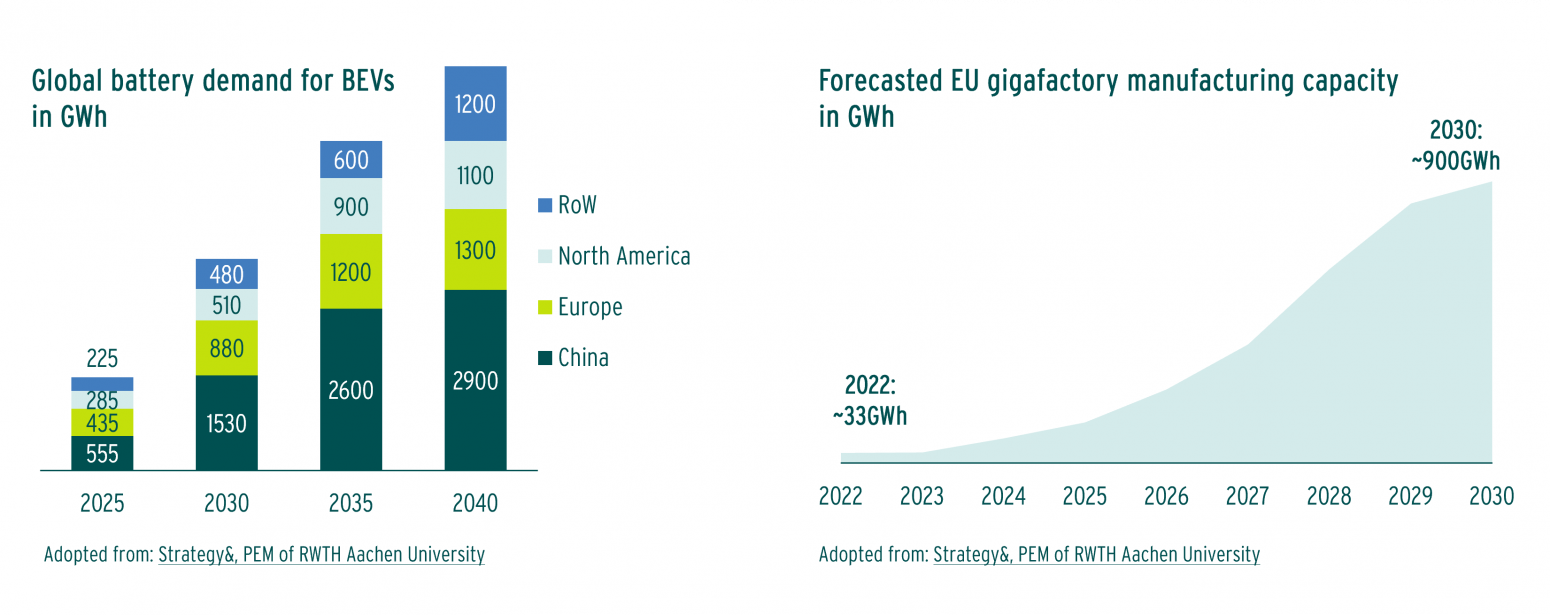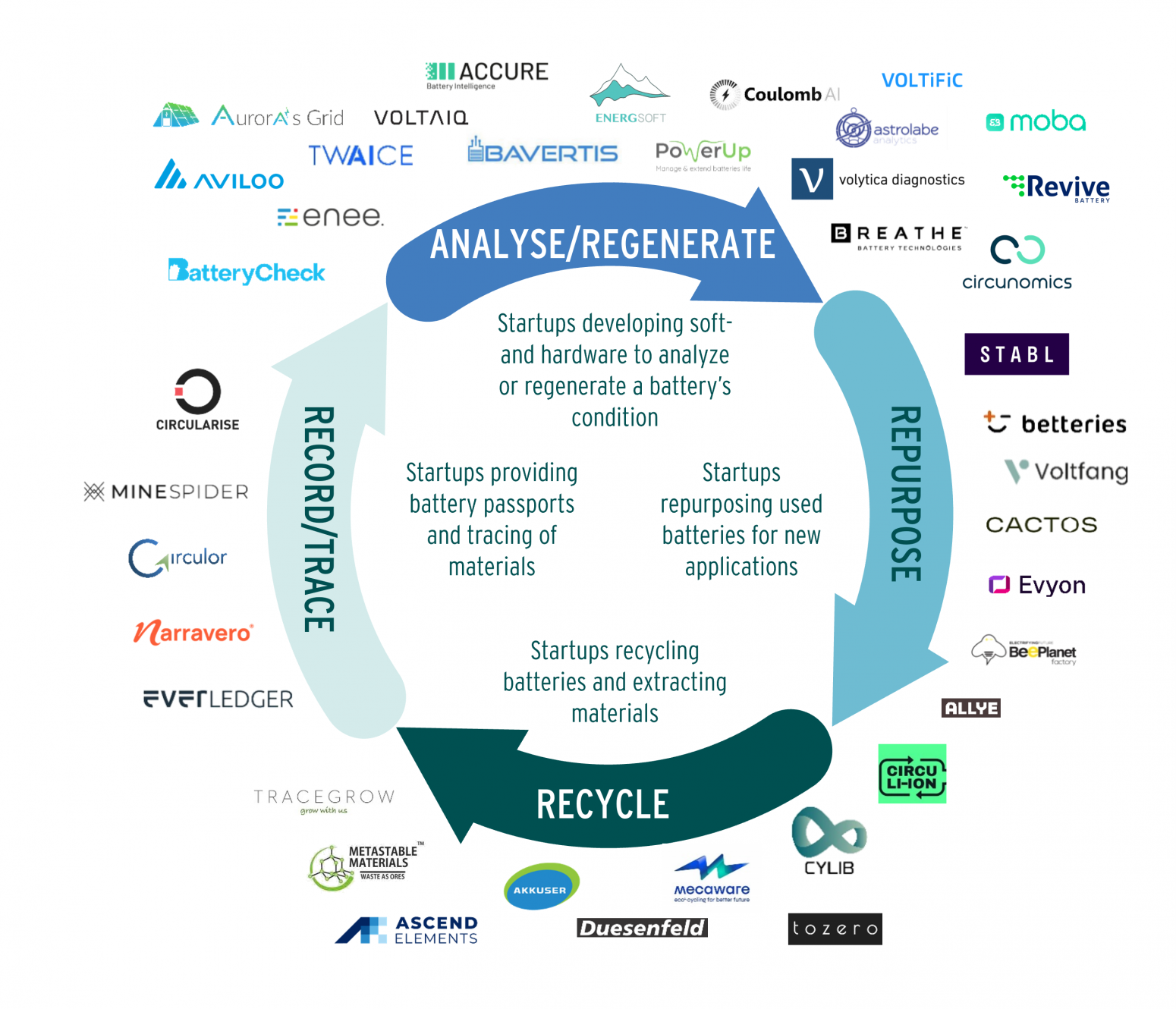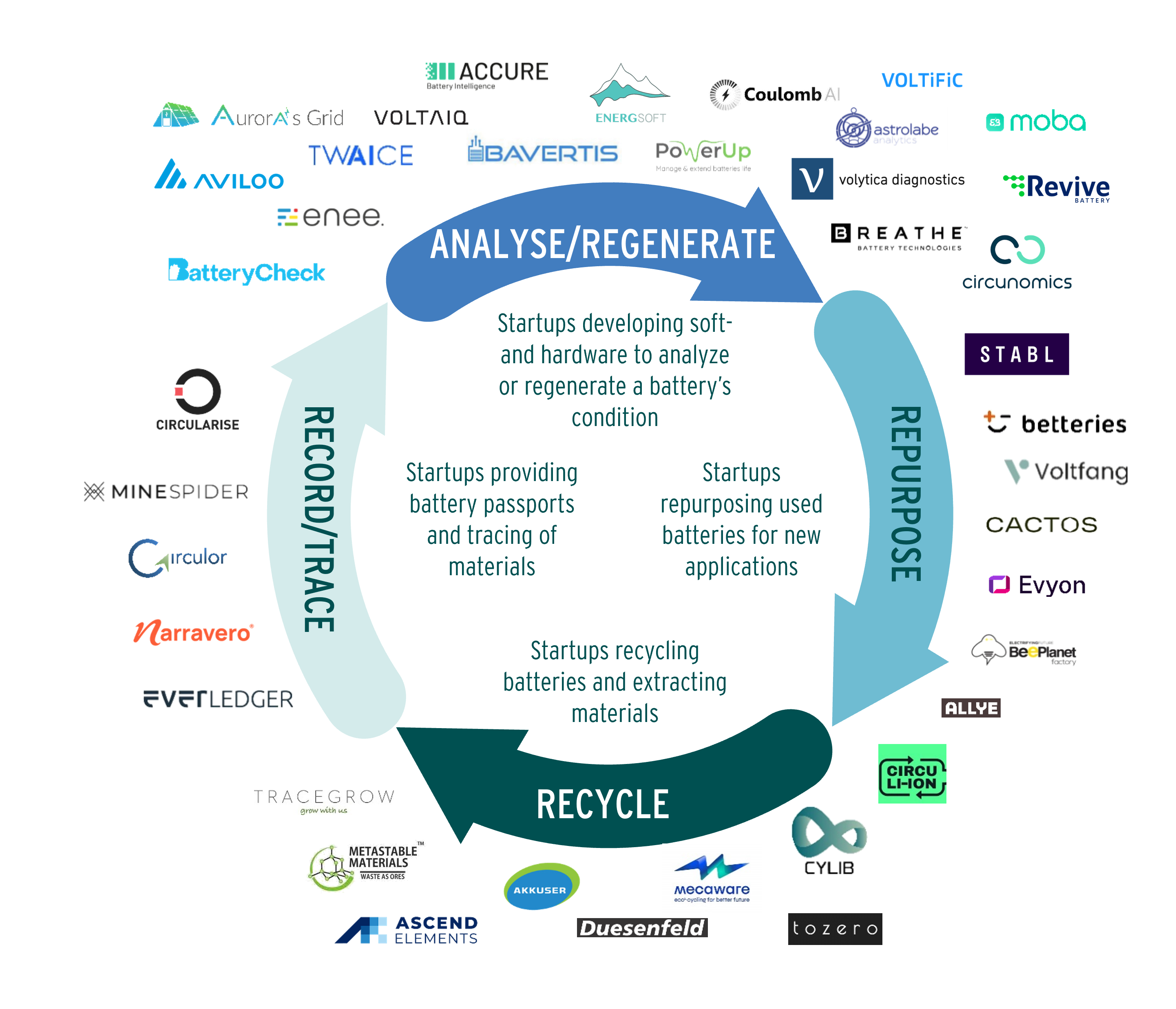With significant potential to mitigate emissions and decarbonize energy supply chains, electrification is an important strategy to reach net zero goals. Most significant is the shift toward EV, with an anticipated 40% of light vehicles globally based on an EV platform by 2030, rising to over 70% by 2040. The surge in global electrification in the subsequent step leads to a substantial increase in the demand for batteries: by 2030, global battery demand for electric vehicles (EVs) is expected to nearly double, reaching up to 6.5 terawatt hours (TWh).
To meet the escalating demand, global battery production is projected to exceed 5 TWh per year of gigafactory capacity by 2030. Europe, in particular, is witnessing significant gigafactory manufacturing ramp-ups, with expectations of nearly 1.0 TWh in EU gigafactory supply by 2030.

It is not a far-fetched to conclude that the growth in EVs and battery production will likely give a boost to the battery recycling and repurposing industry. From 2030 onwards, with vehicles from the first wave of electrification reaching end-of-life, EVs batteries are expected to become the main feedstock for the recycling market and by 2040, the recycling market in the EU is expected to reach ~6,000kt end-of-life batteries from EVs.
In this environment, a series of startups have emerged who take up the challenge of discarded batteries. Over the past months we came across a few of these startups and were able to identify clusters along the value chain.
(This illustration makes no claim to completeness or accuracy, it is merely an attempt of a simple categorization based on limited information. Are you missing a start-up? Please let me know.)

Battery Recycling for a Sustainable Material Supply
The battery recycling industry is poised for growth not only due to an increase in feedstock but also because of supply-chain stability considerations, decarbonization goals, regulatory pressure, and lastly, technological advancements. A key concern for the EU, among other regions, in its path to achieve climate neutrality by 2050 must be the significant increase in demand for critical raw materials (CRMs). By 2030 the EU will need 5 times more cobalt and 18 times more lithium compared to the demand in 2018, numbers which exponentially increase when estimating demand in 2050. The region’s high reliance on imports for most metals primarily from China, Russia, Turkey, or the Democratic Republic of Congo raises concerns about supply-chain stability and ethical considerations.

A fully circular approach to the CRM supply chain is deemed essential to improve resource efficiency and reduce demand for primary CRMs. Recycled materials are expected to play a vital role in meeting future demands of materials for battery cell production in the EU: in 2035, recycled material may account for up to 30% of lithium, nickel, and cobalt demand for battery cell production.
To reach this, regulatory environments are evolving and organizations are compelled to meet recycling efficiency standards, such as the EU’s requirement of 70% recycling efficiency from 2031 onwards. And in the US, the Inflation Reduction Act 2022 requires that EV manufacturers source 40% of critical battery minerals domestically or with free trade partners by 2024.
While battery recycling might not have been a top priority so far, it could become a viable and sustainable business in the EU with projected ~€8bn in revenue in 2035, and ~€5bn value-add. By 2035 about €10bn in investments into the EU battery recycling market are expected. Startups like Cylib, tozero, or Mecaware are aiming to gain their share of it. They compete with a large number of, partly established, recycling companies and business models ranging from companies covering individual value-chain steps (for example shredding) to integrated companies covering all value-chain steps from end-of-life battery reverse logistics to battery material refining. Or internal OEM recyclers at cell and car manufacturers, who recycle cell production waste and used batteries directly on site to ensure a closed loop and at the same time maintain ownership of the battery material and supply chain transparency.
Battery Repurposing instead of Recycling
A circular perspective on the treatment of used batteries may however go beyond recycling to extract raw materials. The average useful life of lithium-ion batteries in EVs today is about 10 years. At the end of primary use, these batteries could still retain up to 70-80% of the original capacity making repurposing a viable option before recycling.
During the lifetime on board of a vehicle, batteries undergo 1,200 to 1,700 equivalent cycles before regressing from a state-of-health of 100%–80%. Then, the drop from 80% to 60–65%, which is usually the lower limit for discarding EV batteries, is expected after 2,500–2,600 cycles more. Integrating repurposed EV batteries into applications requiring less-frequent battery operation for instance, 100 to 600 cycles per year can extend the lifespan of a single battery pack by up to 15 years. Several startups including Stabl Energy, betteries, or Voltfang capitalize on this and repurpose second-life EV batteries as energy storage systems to improve grid stability and flexibility. They effectively form a new market of EV battery repurposing which was valued at merely $0.2bn globally in 2021, but is projected to reach $3.9bn by 2031 growing at a CAGR of 34.3% from 2022 to 2031. Entering into partnerships and collaborations with EV manufacturers, industrial companies, or utilities allows innovative technology providers to create new business models and diverse revenue streams for companies involved in the battery reuse ecosystem.
Analyzing Batteries and Tracing Materials
This ecosystem includes battery analytics specialists like Twaice, Aviloo or Accure who focus – with different technologies – on collecting, processing, and analyzing data from batteries to provide insights into the state-of-health, state-of-charge, state-of-safety of a battery pack, and remaining useful life. Understanding the behavior, predicting performance, and identifying potential issues of a battery is an essential capability to evaluate options for a second-life application, but is also applied while it is still in primary use.
Details about a battery’s design and composition are usually undisclosed to the public to protect trade secrets and intellectual property, making it hard to explore options for the manufacturing of second-life storage systems outside of strict confidentiality agreements. In June 2023, the European Parliament and Council officially approved the content of the new regulation for battery passports to improve the traceability and sustainability of EV batteries. The regulation comes stepwise into effect and from February 2027 makes it mandatory for manufacturers of battery systems larger than 2kWh to give information about their systems in a digital battery passport via a QR code. Startups including Circularise, Circulor and Minespider are in the starting blocks to create these passports and enable secure and transparent exchange of information on batteries and their materials from origin through to end-of-life. It will be a key component to make decisions on a battery’s applicability for repurposing or its transition to recycling.
While industries and countries currently still focus on increasing electrification rates and bringing more EVs on the roads, we can already look at what is coming next. Latest when the vehicles from the first wave of electrification reach end-of-life, the recycling or repurposing of batteries will become a key concern. Building up an industry around these two Rs has the potential to overcome scarcity and supply chain considerations in critical materials but also to contribute to climate targets. Already now recycled battery materials have about four times lower carbon emissions over newly mined battery materials. Improving efficiencies in recycling, coming up with new second-life applications and better insights into batteries and materials, while adhering to sustainability goals and regulatory requirements, requires further innovation and collaborative efforts.
Do you want to exchange on this topic? Please get in touch.
Sources:
Allied Market Research: EV Battery Reuse Market Research 2031, Link
IDTechEx: Second-life Electric Vehicle Batteries 2020-2030, Link
Linda Colarullo and Jagruti Thakur: Second-life EV batteries for stationary storage applications in Local Energy Communities, Link
Strategy&, PEM of RWTH Aachen: EU Recycling Market Study, Link
McKinsey & Company: Battery recycling takes the driver’s seat, Link



